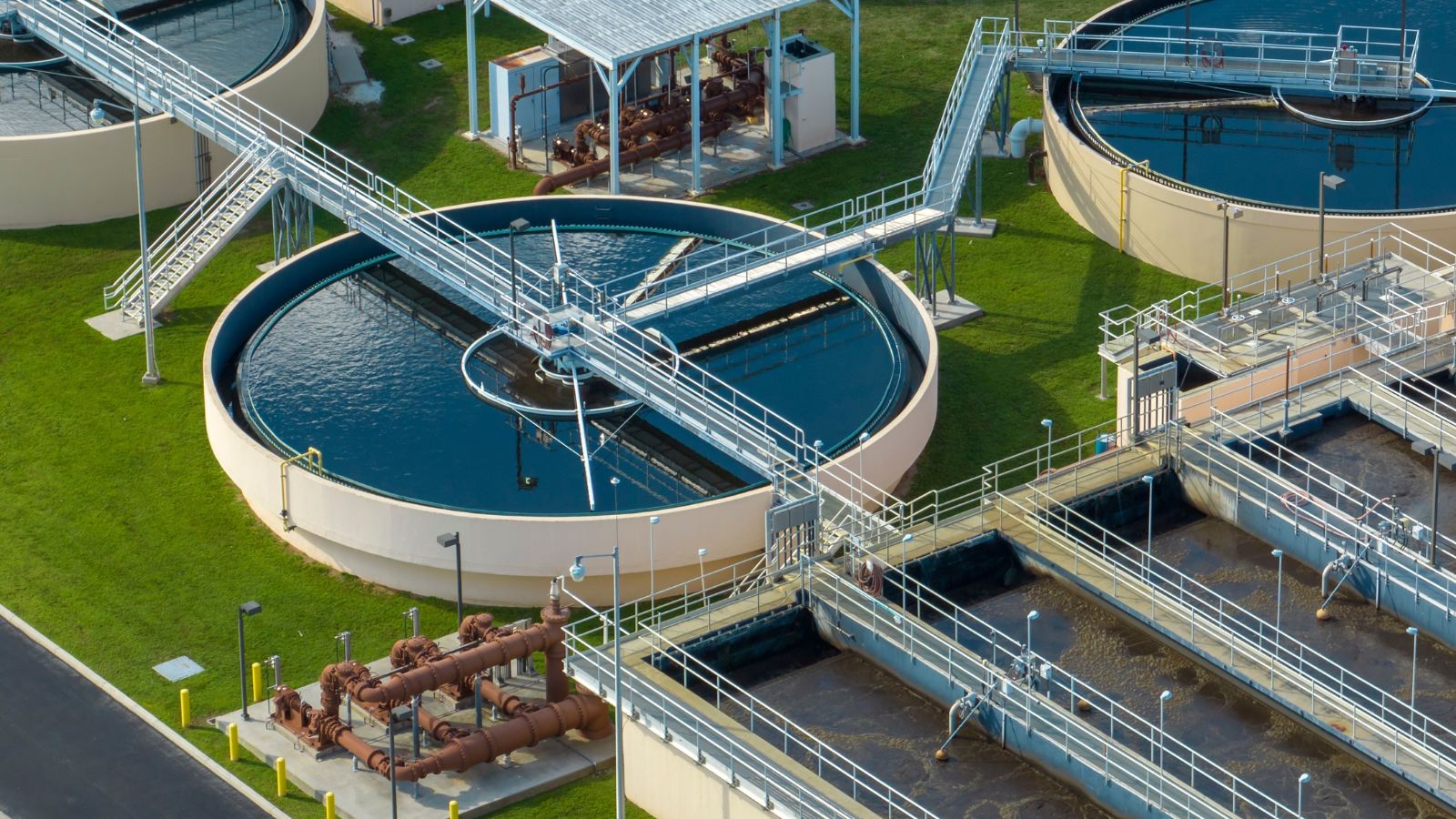Predicting national achievements is never easy, and analysts have repeatedly underestimated how quietly and effectively Canada can shift global conversations. From breakthroughs in science to unexpected economic gains, major moves have often come from places that were not on the world’s radar at the time. Here are 22 times Canada surprised the experts.
Transforming Clean Tech Markets Faster Than Forecasted

A decade ago, energy analysts assumed the country would lag behind rapidly evolving clean tech markets. Instead, investment in renewable systems, battery storage, and emissions reduction technology surged far faster than projections. Firms specializing in hydrogen production, low-carbon fuels, and carbon capture began exporting intellectual property and engineering solutions internationally. The rapid growth in cleantech employment also surprised observers who expected slower development due to regulatory hurdles. Strong academic research partnerships and early pilot projects accelerated commercialization. By the time updated forecasts were published, the industry had already outpaced earlier models, positioning the country as a supplier rather than a follower.
Becoming a Global Leader in Artificial Intelligence Research

Early assessments predicted moderate participation in AI research, not global influence. That outlook changed when researchers from leading universities produced world-class work in deep learning, prompting tech companies to establish major labs. Government-backed academic partnerships allowed top scientists to stay and expand their teams. Instead of losing talent to bigger economies, the sector grew into a cluster model that strengthened the domestic ecosystem. International rankings of AI research output placed the country much higher than analysts initially anticipated. The ability to attract venture capital and global talent created an environment where research breakthroughs consistently outpaced expectations.
Stabilizing Housing Markets After Rapid Price Surges

Economists once argued that home prices in several major cities would continue rising without meaningful slowdowns. Yet targeted policy changes, stricter mortgage rules, and new supply pipelines created conditions that led to a correction that few analysts predicted. Increased construction, particularly in midrise and transit-oriented developments, helped balance demand in specific regions. While affordability remains a challenge, the moderation of extreme price acceleration surprised housing commentators who believed the market had entered a long-term unsustainable pattern. Updated forecasting models now account for policy responsiveness and demographic shifts that helped realign short term trends.
Developing a Resilient Agri Food Innovation Sector

Agricultural specialists once viewed the country as a stable but unspectacular contributor to global food innovation. Over time, investment in precision agriculture, controlled environment systems, and plant-based proteins challenged those assumptions. Collaborations between farmers, universities, and technology firms created tools that improved productivity and reduced input costs. The emergence of large-scale vertical farming and data driven crop management impressed analysts who initially underestimated the pace of experimentation. Demand for sustainable food systems abroad led to significant export opportunities for technologies developed locally, revealing an unexpected strength in a traditionally conservative sector.
Expanding Digital Health Systems More Quickly Than Predicted

Health economists once argued that digital transformation would move slowly due to regional differences and the complexity of public systems. Instead, virtual care adoption accelerated rapidly after new reimbursement models were introduced and healthcare organizations revamped their digital infrastructure. The creation of interoperable health records, artificial intelligence-assisted diagnostics, and advanced telemedicine programs occurred much faster than earlier models suggested. Patients in remote and urban areas experienced improved access to care, surprising experts who predicted a prolonged transition. Investments in health data security and pilot programs helped scale solutions that are now being studied internationally.
Building a Space Technology Sector with Strong Global Demand

Analysts once assumed the small size of the domestic space sector would limit global relevance. Yet robotics, satellite communications, and Earth observation systems gained international recognition. Companies developed sensors, software, and mission components used by major agencies and private space firms. Precision robotics used on missions generated long-term partnerships that few predicted would expand so widely. Meanwhile, small satellite companies demonstrated commercial viability by supplying data to environmental, agricultural, and security clients. The ability to maintain consistent innovation in a niche field challenged early assumptions that the sector lacked growth potential.
Reviving Manufacturing Through Advanced Engineering

Forecasts once suggested that manufacturing decline would continue without a substantial reversal. Instead, investment in automation, skilled training programs, and high-tech production methods revitalized several regions. Companies began integrating robotics, additive manufacturing, and digital twins into operations, improving productivity beyond expected ranges. Trade agreements expanded market access for precision equipment and automotive components. Analysts who expected limited change in output were surprised by the combination of federal and provincial incentives that encouraged modernization.
Becoming a Global Hub for Video Game Development

Industry observers once predicted only modest growth in the domestic gaming sector due to competition from larger markets. Instead, major international studios expanded operations while homegrown companies produced globally successful titles. High-quality training programs and strong talent retention supported creative and technical innovation. Tax incentives and long-term partnerships with educational institutions helped build a pipeline that few early analysts expected. The sector’s influence grew to the point where international rankings consistently placed the country among the top global producers of digital entertainment. This success demonstrated the value of coordinated ecosystem development.
Outperforming Predictions on Immigration Integration

Experts once believed that large-scale immigration increases would strain integration systems. Yet municipalities, community organizations, and employers adapted faster than expected. Settlement programs expanded digital tools, language training was modernized, and partnerships with businesses improved workforce entry. Economic performance data demonstrated stronger outcomes for newcomers than earlier models anticipated, reshaping assumptions about capacity limits. Analysts revised their forecasts to reflect how proactive collaboration among stakeholders strengthened integration rather than weakening it. The experience offered policy lessons to countries managing their own demographic shifts, highlighting the impact of flexible and well-supported programs.
Reducing National Emissions Faster Than Early Models Expected

Environmental analysts once projected slow emissions reductions due to dispersed industries and climate challenges. However, newer regulations, carbon pricing, and clean energy adoption produced measurable declines ahead of earlier timelines. The expansion of renewable capacity and energy efficiency programs played a key role in surpassing predictions. Industrial decarbonization pilots also demonstrated technical progress that impressed observers who anticipated limited early gains. Updated reports began recognizing that coordinated multi-sector approaches could achieve results more quickly than traditional modeling suggested.
Producing Breakthrough Medical Innovations With Global Reach

Medical researchers in the country developed therapies, vaccines, and diagnostic tools that gained worldwide attention despite earlier expectations of slower progress. Collaboration between public research institutes, biotech firms, and universities produced advancements that strengthened the national life sciences ecosystem. Programs supporting early-stage biotech companies helped bring ideas to market more efficiently. Analysts who once viewed the sector as overshadowed by larger countries were surprised by the speed of commercialization in areas such as immunotherapy, genetic medicine, and infectious disease research.
Strengthening Cybersecurity Infrastructure Beyond Projections

Cybersecurity experts once suggested that fragmented service models would slow progress. Instead, federal agencies, private companies, and research institutions coordinated efforts more effectively than expected. Investments in cyber talent development and public-private information sharing networks improved national resilience. New security standards for critical infrastructure raised the quality of digital protection across multiple sectors. Analysts who projected slower modernization revised their assessments after observing the rapid adoption of advanced defensive technologies. This progress created new exportable cybersecurity services and raised confidence in the country’s ability to manage digital threats.
Advancing Arctic Research with Unanticipated Global Influence

Predictions about Arctic research once focused on environmental monitoring with limited international impact. Instead, multidisciplinary initiatives involving climate science, marine biology, engineering, and Indigenous knowledge produced findings that reshaped global climate models. New research stations and international partnerships strengthened the scale of data collection. Experts who expected modest contributions were surprised by the depth of work on permafrost changes, northern ecosystems, and sustainable Arctic infrastructure. The ability to integrate traditional knowledge with scientific research techniques gained recognition from international bodies studying climate adaptation and polar policy.
Creating One of the Fastest Growth Spurts in Film Production

Film economists once expected steady but limited expansion in production. Those forecasts changed when major studios began selecting cities across the country for big-budget projects, leading to rapid increases in employment and infrastructure investments. Modern sound stages, competitive tax incentives, and a skilled workforce raised production capacity beyond earlier projections. Domestic filmmakers also benefited from stronger funding programs and broader distribution channels. Observers were surprised by how quickly the sector moved from moderate output to global prominence. The surge demonstrated how a combination of talent and strategic incentives can shift industry dynamics.
Becoming a Leader in Quantum Technology Development

Quantum computing was once viewed as a long-term research field with limited near-term impact. Yet partnerships between universities, startups, and major tech firms produced operational breakthroughs earlier than analysts predicted. Facilities dedicated to quantum research attracted global talent and investment. Companies developed hardware, software tools, and quantum-safe encryption that gained international attention. Forecasts were rewritten as progress in prototyping and commercial applications advanced faster than expected. The strength of academic foundations combined with entrepreneurial activity created an ecosystem that continues to exceed early predictions.
Growing the Tourism Sector with Unexpected Resilience

Tourism analysts once predicted a slow recovery following global travel disruptions. Instead, domestic and international travel rebounded more quickly due to strategic marketing, regional event growth, and strong interest in nature-based destinations. Investments in digital tourism infrastructure enhanced visitor experience, improving booking systems and promoting lesser-known regions. Communities developed new attractions and partnerships that supported local economies. The speed of recovery challenged early assessments that anticipated long-term declines. Updated projections recognized the role of diversified tourism offerings in driving faster-than-expected growth.
Expanding Indigenous Economic Development Initiatives

Early forecasts underestimated the scale and impact of Indigenous led economic development. Over time, major projects in energy, tourism, resource management, and technology highlighted the strength of Indigenous entrepreneurship. Financial institutions and governments supported new ownership models, including equity participation in large infrastructure projects. Analysts noted unexpected growth in sectors once considered difficult to access due to regulatory complexity. Educational programs and training initiatives strengthened capacity, generating outcomes that shifted expectations.
Achieving Rapid Growth in Climate Adaptation Planning

Climate adaptation was once seen as a slow, technical field unlikely to scale quickly. Yet municipalities and provinces developed action plans at a pace that exceeded early forecasts. Infrastructure upgrades, early warning systems, and community climate programs expanded rapidly due to federal funding and cross-jurisdictional collaboration. Analysts revised their outlooks after observing how urban design, flood mitigation, and wildfire resilience strategies were implemented more quickly than projected. The shift reflected increased recognition of local vulnerabilities and a coordinated effort to address long-term climate risks through practical interventions.
Advancing Ocean Technology with Strong Commercial Potential

Ocean technology specialists originally predicted steady but modest growth in marine innovation. Instead, the development of underwater sensors, autonomous vessels, and marine data analytics moved faster than anticipated. Companies supplying research institutions, shipping firms, and environmental monitoring agencies created a dynamic industry cluster. Collaboration among universities and private firms allowed prototypes to transition into commercial products more rapidly than expected. Analysts noted increasing global demand for tools that advance ocean mapping, fisheries management, and offshore safety.
Increasing the Global Competitiveness of Higher Education

Higher education observers once expected steady enrolment and moderate international influence. Yet universities improved their rankings, expanded research partnerships, and attracted students from a wider range of countries. New programs in technology, health, and environmental sciences gained strong global attention. Investments in student experience and modern research facilities raised the profile of institutions that were previously less visible internationally. Analysts who predicted slower growth were surprised by the rate of innovation in curriculum design, experiential learning, and global engagement strategies. These developments strengthened the country’s position in global education markets.
Strengthening Trade Diversification Beyond Expected Levels

Trade specialists initially anticipated gradual diversification away from reliance on a small number of markets. However, trade agreements, supply chain restructuring, and new export strategies accelerated the shift. Firms expanded into regions where earlier penetration was limited, including Southeast Asia, South America, and parts of Europe. Updated data showed unexpected increases in exports of agricultural products, technology services, manufacturing equipment, and specialized minerals. Analysts revised their predictions after recognizing the impact of coordinated trade promotion efforts and the willingness of companies to explore emerging markets.
Becoming a Strong Player in Battery and Critical Minerals Supply Chains

Industry experts once believed the country would remain a secondary actor in global battery supply chains. That assessment changed when mining developments, processing facilities, and battery component manufacturing expanded more quickly than anticipated. Collaboration with automotive companies and international partners advanced investment in extraction, refining, and recycling. Analysts were surprised by how effectively regions adapted to emerging demand for critical minerals like lithium, nickel, and cobalt. Government incentives and long-term sustainability commitments supported growth that surpassed earlier forecasts and positioned the country as a reliable contributor to global clean energy transitions.
21 Products Canadians Should Stockpile Before Tariffs Hit

If trade tensions escalate between Canada and the U.S., everyday essentials can suddenly disappear or skyrocket in price. Products like pantry basics and tech must-haves that depend on are deeply tied to cross-border supply chains and are likely to face various kinds of disruptions
21 Products Canadians Should Stockpile Before Tariffs Hit
